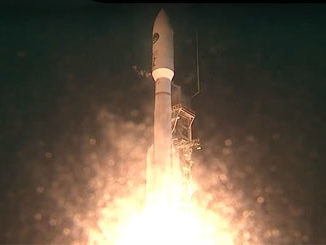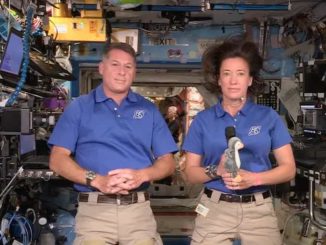
CAPE CANAVERAL — Sky-watchers with a passion for looking up and tracking satellites with remarkable precision have made quick work of locating the spacecraft launched atop an Atlas 5 rocket on Thursday.
The NROL-61 satellite for the National Reconnaissance Office was successfully deployed into space by the United Launch Alliance rocket following an 8:37 a.m. EDT (1237 GMT) liftoff from Cape Canaveral.
The vehicle headed eastward on 1.5 million pounds of thrust toward a geosynchronous transfer orbit to release the satellite about a half-hour later.
This is the standard preliminary orbit for craft headed for a geosynchronous orbit 22,300 miles above the Earth.
About an hour after liftoff, a sharp-eyed observer in Australia, Paul Camilleri, spotted both the NROL-61 satellite and the Centaur upper stage as two distinct dots and watched them for two hours as they climbed in the night sky.
The Centaur was most visible as it was in the process of dumping its residual fuel reserves, creating a large cloud that makes for an impressive sight.
The satellite had been successfully delivered into a 750 by 22,250 mile orbit inclined 18.7 degrees to the equator, according to efforts by Cees Bassa and Ted Molczan to deduce the orbit from Camilleri’s observations and pictures taken of the objects in the star-filled sky.
“We had excellent tracking of the initial orbit, thanks to Paul Camilleri, the newest member of our informal group, who stayed up most of the night. Paul lives in Australia, which is ideally placed to observe many of the types of launches that interest us,” said Molczan, a member of the satellite-tracking hobby.
When Camilleri made his observations, the spent Centaur had just completed its deorbit burn, an action meant to remove the spent rocket body from orbit in the spirit of reducing space debris.
The maneuver had changed the Centaur’s orbit to reduce the perigee — or orbit’s low point — to -145 miles, putting it into the atmosphere to harmlessly burn up about 8 hours after liftoff.
“The negative perigee height is consistent with the expectation that the Centaur was to re-enter on its first revolution, revealed by the NOTAM,” Molczan said.
Hazard area warnings were issued in the days before launch for a remote stretch of the Pacific about 500 miles south of Hawaii for the Centaur re-entry, which occurred around 5 p.m. EDT (2100 GMT).
Based on the rocket’s performance, the Atlas 5 with two strap-on solid-fuel boosters could deliver roughly 12,000 pounds of payload into the specific orbit achieved by this launch, Molczan said.
“NROL-61 is payload is USA 269 (2016-047A / 41724), which I believe is the first of a new generation of communication relay,” Molczan said of the official numbering scheme for the satellite.
The NRO has used earlier versions — that were smaller and lighter — of such satellites since 1990 to relay data from low-Earth orbiting surveillance platforms.
See earlier NROL-61 coverage.
Our Atlas archive.



